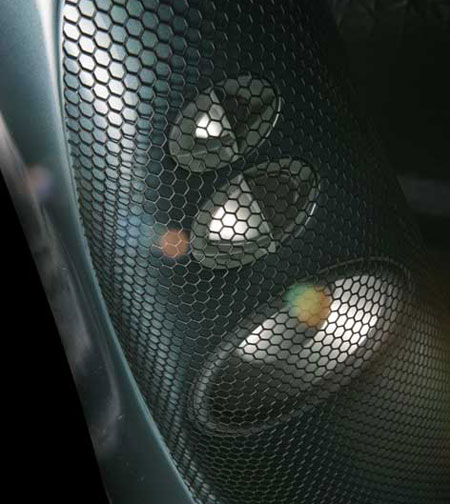Vivid Audio Giya Speaker


Designed by Laurence Dickie, who also created the B&W Nautilus, the Giya is based on the concept of tapered-tube loading. Each driver is mounted at the mouth of an exponentially tapered tube with damping material at the far end to absorb the backwave. But unlike the Nautilus, the smaller tubes are hidden within the gracefully curved, carbon-fiber cabinet, which forms the ported tube for the woofers.

Speaking of drivers, the Giya's are all made by Vivid—they are not outsourced as with so many other speakers. And all diaphragms are made of the same material, a magnesium/aluminum composite that is said to achieve a very high degree of coherence and linearity. The 1-inch dome tweeter, 2-inch dome midrange, and 6.5-inch cone mid-bass driver are positioned relatively close to each other with no sharp corners anywhere to diffract the sound.
Two cone woofers are mounted in the base of the cabinet and fire to opposing sides in a force-canceling configuration; in the G1, the woofers measure 11.5 inches in diameter, while the G2's are two inches smaller. All drivers are isolated from the cabinet with O-rings to damp unwanted vibrations.
The G1's frequency response is specified to extend from 29Hz to 33kHz (±2dB on axis), with –6dB points at 25Hz and 36kHz; the G2's low end is 3Hz higher. However, North American importer On a Higher Note claims to have measured the G1's in-room response at 1.5 meters with useful bass all the way down to 12Hz!

Among Vivid's other offerings is the C1 center-channel speaker, which includes the same tapered-tube-loaded tweeter and midrange as the Giya along with two 6.5-inch ported woofers to achieve a specified frequency response from 49Hz to 33kHz (±2dB on axis) with –6dB points at 43Hz and 36kHz. And like the Giya, the C1's cabinet has no sharp edges to minimize diffraction.

I haven't heard the Giya, but Stereophile editor John Atkinson has, and he likes the sound of this speaker very much. In fact, he used the G1 in an experiment to compare the sound of a live piano recital with a top-notch recording he made of the same performance; you can read the details here. In addition, Wes Phillips is reviewing the G1 for Stereophile, so we'll soon have a thorough evaluation to consider. Meanwhile, consider the price—the G1 now goes for $58,000/pair, with a price increase to $65,000 in April, while the G2 costs $50,000/pair. That's a lot of dough, but it's surprisingly little compared to the six-figure speakers with which the Giya can rightfully compete. And it looks wicked cool, to boot!
- Log in or register to post comments



























































